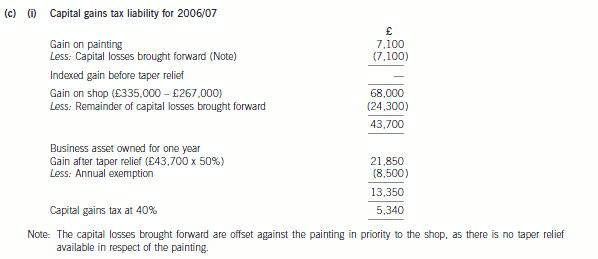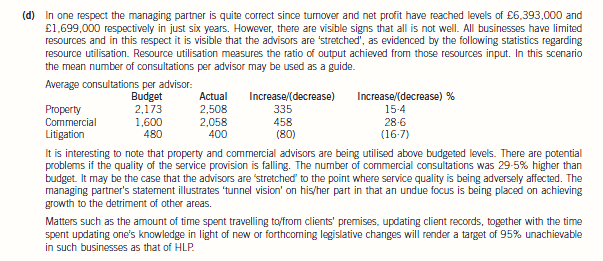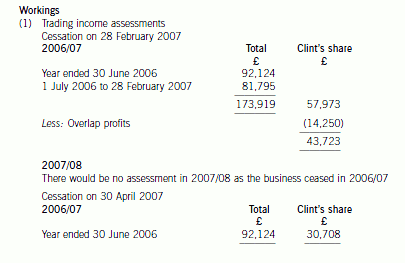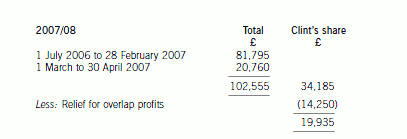2020年天津市ACCA国际会计师报名费要多少钱?
发布时间:2020-01-09
自国家政策改革以来,数以万计的人都听闻过想要考取ACCA证书需要花费一笔不菲的金额,那么这个具体的数额是多少呢?或许大家都了解甚少,那么接下来,51题库考试学习网将会为大家带来关于ACCA考试收费的具体款项和具体数值,好让报考ACCA考试的萌新们有一定的心理准备,建议大家收藏哦~
一、必须缴纳的费用:
要参加ACCA考试,首先你要成为ACCA的学员,那就意味着你要先交一次性的注册费(£79)和年费(£105)如果你在5月9日之前注册,那么在你成为学员的第一年,你需要付两笔费用:注册费£79和年费£105。(也就是说在第一年的时候你需要缴纳£184)而在后面的每一年都得缴纳£105,如果你不缴纳这毕费用将会被取消ACCA会员资格,导致你ACCA证书无效。
那么有的同学说了,ACCA有免试政策,获得相应的免试科目,是不是就不用缴费了呢?答案是no.
ACCA协会官方规定,即使申请免考通过,免考的几门科目要等同于需考试的科目,需要交与考试费相等的免考费。F1—F3的免考费是£74,F5—F9的免考费是£103,P阶段没有免考。因此考试的13个科目的考试费用的缴费是怎么样也不能少的。需要注意的是,考试报名的费用与你报名的时间是有关系的,换句话来解释就是,你越早报名所需要的报名费用也就越少(拿2020年3月份ACCA考试的科目收费为例,如下图所示)

首先,大家肯定有所了解,ACCA考试的科目多达13个科目,先来给你算算ACCA考试报名需要的所有费用(按提前报名给你算的费用,这样最节省):f1-f3费用约为100*3≈300英镑,f4-f9为103*6=618英镑,SBL为180磅,SBR为129磅,p4-p7(选2)为129*2=258英镑。这是2020年最新ACCA考试费用计算方式所以目前一共13门考试费1485英镑。
目前汇率为1英镑≈8.8人民币,所有考完加上第一次报名必须缴纳的费用就为1485+79+105*4=1984英镑*8.8≈17460元人民币,因此光是13门考试科目的报名费用就多达17000元人民币,这还是你每一个科考试能够一次通过的前提,这里没有报考二次报考的费用。
二、 个人选择的费用 :
1、优先考虑的就是:教材,在这里建议大家去ACCA官方或者淘宝上去购买相关教材。按正版每门150人民币*13=1950元,实际上可能会有出入,因为市场价格在变动,这是最低的售价,当然练习册都不一样,个人自行考虑。
2、网课:自己购买,按需决定,各家机构的网课价格质量都不一样,选择对自己最适合的,费用预算高点,按三万元算。报网课能够提升你通过考试的几率,相对你自己复习而已更有针对性
以上列举了一些可能会花费的项目,主要还是在必须缴纳的费用、教材费或是网课和还有不过的再次缴纳考试费。
看完上面的文章,相信各位同学们对ACCA考试的一些收费标准已经有了一定的心理准备。的确相比较国内其他会计考试而言,所需要的费用多的不是一点半点,因此建议各位同学谨慎考虑,结合自己实际的学习情况和家庭情况进行报考,不要盲目跟风。
下面小编为大家准备了 ACCA考试 的相关考题,供大家学习参考。
(c) (i) Compute Gloria’s capital gains tax liability for 2006/07 ignoring any claims or elections available to
reduce the liability. (3 marks)

(d) The managing partner of HLP stated at a recent partners’ meeting that ‘every advisor should aim to ensure that
95% of all hours he/she works are billed to clients. This will ensure that we remain both profitable and
competitive’.
Required:
Discuss the statement of the managing partner, drawing attention to any concerns that you may have
regarding the statement. (6 marks)

2 Marrgrett, a public limited company, is currently planning to acquire and sell interests in other entities and has asked
for advice on the impact of IFRS3 (Revised) ‘Business Combinations’ and IAS27 (Revised) ‘Consolidated and Separate
Financial Statements’. The company is particularly concerned about the impact on earnings, net assets and goodwill
at the acquisition date and any ongoing earnings impact that the new standards may have.
The company is considering purchasing additional shares in an associate, Josey, a public limited company. The
holding will increase from 30% stake to 70% stake by offering the shareholders of Josey, cash and shares in
Marrgrett. Marrgrett anticipates that it will pay $5 million in transaction costs to lawyers and bankers. Josey had
previously been the subject of a management buyout. In order that the current management shareholders may remain
in the business, Marrgrett is going to offer them share options in Josey subject to them remaining in employment for
two years after the acquisition. Additionally, Marrgrett will offer the same shareholders, shares in the holding company
which are contingent upon a certain level of profitability being achieved by Josey. Each shareholder will receive shares
of the holding company up to a value of $50,000, if Josey achieves a pre-determined rate of return on capital
employed for the next two years.
Josey has several marketing-related intangible assets that are used primarily in marketing or promotion of its products.
These include trade names, internet domain names and non-competition agreements. These are not currently
recognised in Josey’s financial statements.
Marrgrett does not wish to measure the non-controlling interest in subsidiaries on the basis of the proportionate
interest in the identifiable net assets, but wishes to use the ‘full goodwill’ method on the transaction. Marrgrett is
unsure as to whether this method is mandatory, or what the effects are of recognising ‘full goodwill’. Additionally the
company is unsure as to whether the nature of the consideration would affect the calculation of goodwill.
To finance the acquisition of Josey, Marrgrett intends to dispose of a partial interest in two subsidiaries. Marrgrett will
retain control of the first subsidiary but will sell the controlling interest in the second subsidiary which will become
an associate. Because of its plans to change the overall structure of the business, Marrgrett wishes to recognise a
re-organisation provision at the date of the business combination.
Required:
Discuss the principles and the nature of the accounting treatment of the above plans under International Financial
Reporting Standards setting out any impact that IFRS3 (Revised) ‘Business Combinations’ and IAS27 (Revised)
‘Consolidated and Separate Financial Statements’ might have on the earnings and net assets of the group.
Note: this requirement includes 2 professional marks for the quality of the discussion.
(25 marks)
2 IFRS3 (Revised) is a further development of the acquisition model and represents a significant change in accounting for business
combinations. The consideration is the amount paid for the business acquired and is measured at fair value. Consideration will
include cash, assets, contingent consideration, equity instruments, options and warrants. It also includes the fair value of all equity
interests that the acquirer may have held previously in the acquired business. The principles to be applied are that:
(a) a business combination occurs only in respect of the transaction that gives one entity control of another
(b) the identifiable net assets of the acquiree are re-measured to their fair value on the date of the acquisition
(c) NCI are measured on the date of acquisition under one of the two options permitted by IFRS3 (Revised).
An equity interest previously held in the acquiree which qualified as an associate under IAS28 is similarly treated as if it were
disposed of and reacquired at fair value on the acquisition date. Accordingly, it is re-measured to its acquisition date fair value, and
any resulting gain or loss compared to its carrying amount under IAS28 is recognised in profit or loss. Thus the 30% holding in
the associate which was previously held will be included in the consideration. If the carrying amount of the interest in the associate
is not held at fair value at the acquisition date, the interest should be measured to fair value and the resulting gain or loss should
be recognised in profit or loss. The business combination has effectively been achieved in stages.
The fees payable in transaction costs are not deemed to be part of the consideration paid to the seller of the shares. They are not
assets of the purchased business that are recognised on acquisition. Therefore, they should be expensed as incurred and the
services received. Transaction costs relating to the issue of debt or equity, if they are directly attributable, will not be expensed but
deducted from debt or equity on initial recognition.
It is common for part of the consideration to be contingent upon future events. Marrgrett wishes some of the existing
shareholders/employees to remain in the business and has, therefore, offered share options as an incentive to these persons. The
issue is whether these options form. part of the purchase consideration or are compensation for post-acquisition services. The
conditions attached to the award will determine the accounting treatment. In this case there are employment conditions and,
therefore, the options should be treated as compensation and valued under IFRS2 ‘Share based payment’. Thus a charge will
appear in post-acquisition earnings for employee services as the options were awarded to reward future services of employees
rather than to acquire the business.
The additional shares to a fixed value of $50,000 are contingent upon the future returns on capital employed. Marrgrett only wants
to make additional payments if the business is successful. All consideration should be fair valued at the date of acquisition,
including the above contingent consideration. The contingent consideration payable in shares where the number of shares varies
to give the recipient a fixed value ($50,000) meets the definition of a financial liability under IAS32 ‘Financial Instruments:
Presentation’. As a result the liability will have to be fair valued and any subsequent remeasurement will be recognised in the
income statement. There is no requirement under IFRS3 (Revised) for the payments to be probable.
Intangible assets should be recognised on acquisition under IFRS3 (Revised). These include trade names, domain names, and
non-competition agreements. Thus these assets will be recognised and goodwill effectively reduced. The additional clarity in
IFRS3 (Revised) could mean that more intangible assets will be recognised on acquisition. As a result of this, the post-combination
income statement may have more charges for amortisation of the intangibles than was previously the case.
The revised standard gives entities the option, on a transaction by transaction basis, to measure non-controlling interests (NCI) at
the fair value of the proportion of identifiable net assets or at full fair value. The first option results in measurement of goodwill on
consolidation which would normally be little different from the previous standard. The second approach records goodwill on the
NCI as well as on the acquired controlling interest. Goodwill is the residual but may differ from that under the previous standard
because of the nature of the valuation of the consideration as previously held interests are fair valued and also because goodwill
can be measured in the above two ways (full goodwill and partial goodwill). The standard gives entities a choice for each separate
business combination of recognising full or partial goodwill. Recognising full goodwill will increase reported net assets and may
result in any future impairment of goodwill being of greater value. Measuring NCI at fair value may have some difficulties but
goodwill impairment testing may be easier under full goodwill as there is no need to gross-up goodwill for partly-owned
subsidiaries. The type of consideration does not affect goodwill regardless of how the payment is structured. Consideration is
recognised in total at its fair value at the date of acquisition. The form. of the consideration will not affect goodwill but the structure
of the payments can affect post-acquisition profits. Contingent payments which are deemed to be debt instruments will be
remeasured at each reporting date with the change going to the income statement.
Marrgrett has a maximum period of 12 months to finalise the acquisition accounting but will not be able to recognise the
re-organisation provision at the date of the business combination. The ability of the acquirer to recognise a liability for reducing or
changing the activities of the acquiree is restricted. A restructuring provision can only be recognised in a business combination
when the acquiree has at the acquisition date, an existing liability which complies with IAS37 ‘Provisions, contingent liabilities and
contingent assets’. These conditions are unlikely to exist at the acquisition date. A restructuring plan that is conditional on the
completion of a business combination is not recognised in accounting for the acquisition but the expense will be met against
post-acquisition earnings.
IAS27 (Revised) uses the economic entity model whereas previous practice used the parent company approach. The economic
entity model treats all providers of equity capital as shareholders of the entity even where they are not shareholders in the parent.
A partial disposal of an interest in a subsidiary in which control is still retained is seen as a treasury transaction and accounted for
in equity. It does not result in a gain or loss but an increase or decrease in equity. However, where a partial disposal in a subsidiary
results in a loss of control but the retention of an interest in the form. of an associate, then a gain or loss is recognised in the whole
interest. A gain or loss is recognised on the portion that has been sold, and a holding gain or loss is recognised on the interest
retained being the difference between the book value and fair value of the interest. Both gains/losses are recognised in the income
statement.
(ii) Analyse the effect of delaying the sale of the business of the Stiletto Partnership to Razor Ltd until
30 April 2007 on Clint’s income tax and national insurance position.
You are not required to prepare detailed calculations of his income tax or national insurance liabilities.
(4 marks)
(ii) The implications of delaying the sale of the business
The implications of delaying the sale of the business until 30 April would have been as follows:
– Clint would have received an additional two months of profits amounting to £6,920 (£20,760 x 1/3).
– Clint’s trading income in 2006/07 would have been reduced by £13,015 (£43,723 – £30,708), much of which
would have been subject to income tax at 40%. His additional trading income in 2007/08 of £19,935 would all
have been taxed at 10% and 22%.
– Clint is entitled to the personal age allowance of £7,280 in both years. However, it is abated by £1 for every £2
by which his total income exceeds £20,100. Once Clint’s total income exceeds £24,590 (£20,100 + ((£7,280
– £5,035) x 2)), his personal allowance will be reduced to the standard amount of £5,035. Accordingly, the
increased personal allowance would not be available in 2006/07 regardless of the year in which the business was
sold. It is available in 2007/08 (although part of it is wasted) but would not have been if the sale of the business
had been delayed.
– Clint’s class 4 national insurance contributions in 2006/07 would have been reduced due to the fall in the level
of his trading income. However, much of the saving would be at 1% only. Clint is not liable to class 4 national
insurance contributions in 2007/08 as he is 65 at the start of the year.
– Changing the date on which the business was sold would have had no effect on Clint’s class 2 liability as he is
not required to make class 2 contributions once he is 65 years old.


声明:本文内容由互联网用户自发贡献自行上传,本网站不拥有所有权,未作人工编辑处理,也不承担相关法律责任。如果您发现有涉嫌版权的内容,欢迎发送邮件至:contact@51tk.com 进行举报,并提供相关证据,工作人员会在5个工作日内联系你,一经查实,本站将立刻删除涉嫌侵权内容。
- 2021-04-04
- 2020-01-10
- 2020-02-26
- 2020-01-10
- 2020-03-05
- 2020-01-29
- 2020-01-10
- 2020-01-09
- 2020-01-09
- 2021-04-10
- 2020-02-14
- 2020-01-08
- 2021-01-16
- 2020-02-28
- 2020-09-03
- 2021-01-13
- 2020-01-08
- 2020-09-04
- 2020-08-15
- 2021-04-25
- 2020-01-09
- 2020-01-10
- 2021-01-08
- 2021-09-12
- 2020-02-27
- 2020-01-09
- 2020-01-08
- 2020-07-04
- 2020-01-09
- 2021-01-13